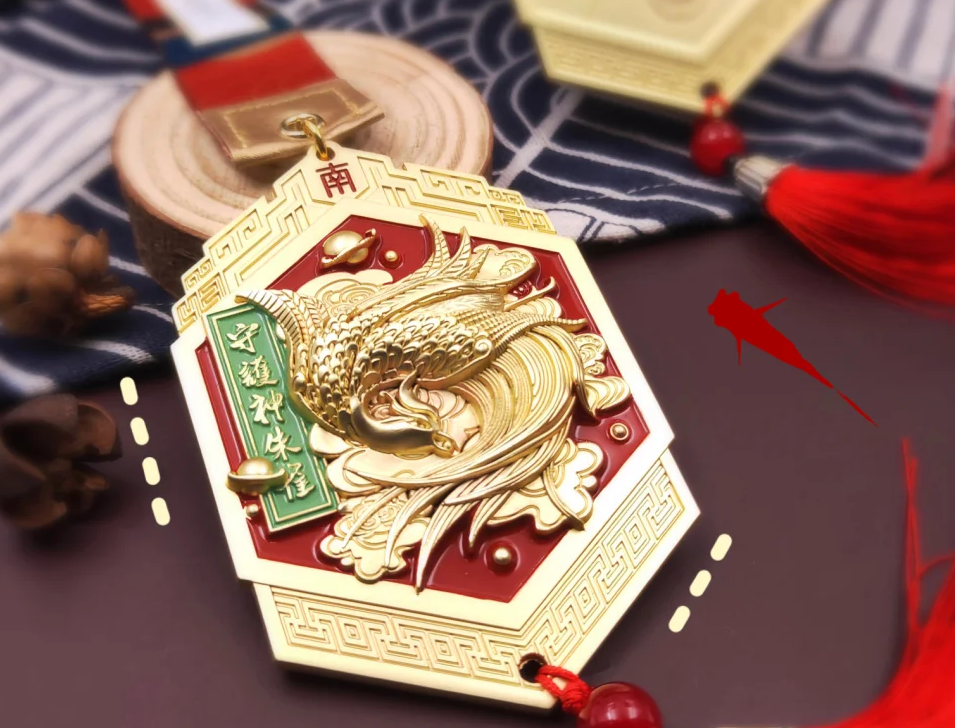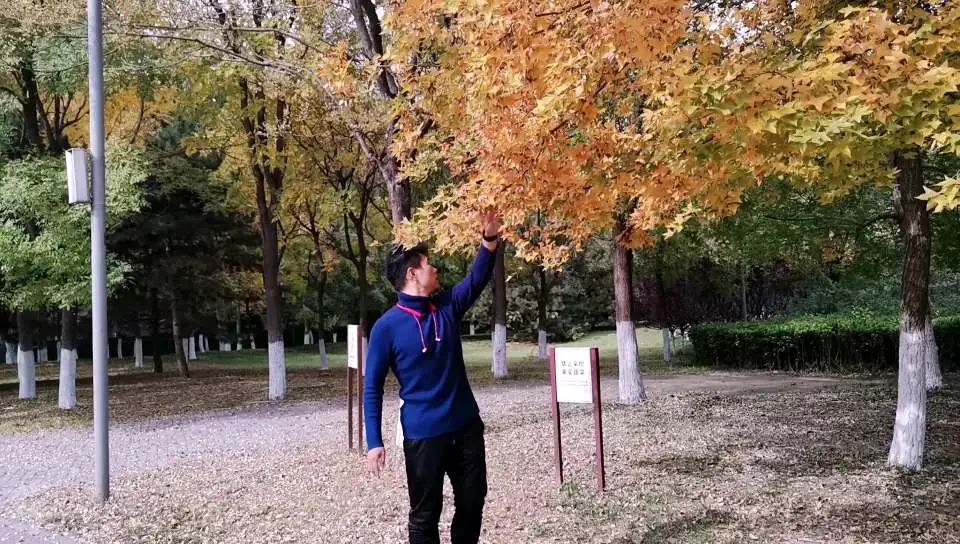
Deep Pulse (Chen Mai):
Principle of the Deep Pulse:
The deep pulse can only be felt with significant pressure on the tendons and bones. It is like sand wrapped in cotton, firm inside and soft outside. Like a stone thrown into water, it must reach the bottom.
Definition:
The deep pulse is easily understood in contrast to the superficial pulse; it is a pulse that requires finger pressure to be felt. The phrase “pushing to the tendons and bones” is often used in acupuncture practice when locating acupoints and maintaining Qi. For example, the Weizhong (委中) acupoint, as discussed in previous lectures, must be accurately located by palpating the artery in the popliteal fossa, which is the essence of the deep pulse. Another example is during the application of the Shanshu (腎俞) acupuncture technique, where the left hand is pressed on the acupoint to determine if a sensation of heat is approaching, which is often felt in conjunction with the pulse.
During the summer vacation, while assisting my father in his clinic, I would first take the patient’s history and document their tongue and pulse. A patient with phlegm-damp obstruction causing dizziness presented with a slippery pulse. I noted it down as a fine slippery pulse and prescribed the Erchen Decoction (二陈汤) as a base formula. When my father reviewed the medical history and checked the pulse, he asked, “Is the pulse deep or superficial?”
I hesitated and said, “Deep?” My father remained silent, prompting me to reconsider and say, “Superficial?” This resulted in silence again, and upon rechecking the pulse, I felt uncertain. My father then pulled down the patient’s sleeve to cover the wrist and pressed down through the clothing, only then feeling the slippery pulse, and he looked at me and said, “Remember, like sand wrapped in cotton—what you feel now is the deep position of the slippery pulse. The previous pulse was fine and slippery, while the deep pulse was fine. Therefore, blood deficiency is the root cause, and phlegm obstruction is the manifestation. Nourishing blood while transforming phlegm is appropriate with the Erchen Decoction, but adding a warming herb like Dang Gui (当归) is more suitable.”
The second time I encountered the deep pulse was when my father treated a young man with a fever. After two months of various antipyretics and antibiotics, the fever persisted, and he needed assistance to walk. The family reported that he had been treated everywhere, including in Beijing, and the hospital found no major issues, yet the fever would not subside. They wondered if it was a terminal illness. My father examined the tongue and checked the pulse, then wrote a prescription for three herbs: Ma Huang (麻黄), Fu Zi (附子), and Xi Xin (细辛), three doses. I was puzzled, thinking, “Fever? Exterior syndrome? Can such hot herbs be used?” Until I pressed my fingers down to the tendon layer and felt a weak pulse, I exclaimed, “This is a Shaoyin disease, initially presenting with fever, and the pulse is deep; Ma Huang and Xi Xin Decoction should be used.” Three days later, the patient returned with a banner to express gratitude.
Main Conditions:
Principle of the Deep Pulse
Poem on the Deep Pulse
Deep pulse indicates water retention in the Yin channels, with heat and cold symptoms, slippery with phlegm.
Weak and deep indicates deficiency and Qi stagnation; deep yet strong indicates accumulation and cold.
Deep pulse at the cun position indicates phlegm obstruction and water retention in the chest; guan position indicates cold pain and obstruction.
Deep pulse at the chi position indicates turbidity and diarrhea; kidney deficiency affects the lower back.
According to Xiao Tong Wu’s pulse theory:
Left cun pulse deep indicates internal cold; chest pain is due to phlegm and fluid.
Guan position deep indicates abdominal pain; deep pulse indicates liver cold and lateral pain.
Chi position deep indicates kidney cold invasion; lower back pain and frequent turbid urination.
Men may experience cold essence, women may have blood stasis; deep and fine indicates muscle soreness and residual urination.
Right cun pulse deep indicates lung cold; phlegm retention causes cough and difficulty in breathing.
Tight and slippery cough is due to cold injury; fine and slippery indicates heat and cold entangled.
Right guan pulse deep indicates stomach cold; food stagnation and acid reflux.
Right chi pulse deep indicates lower back pain; if still deep and fine, it indicates cold in the abdomen.
The deep pulse generally indicates internal conditions; a strong pulse indicates excess, while a weak pulse indicates deficiency. The deep pulse is also associated with water retention; if deep and slow, it often indicates cold diseases, while deep and rapid indicates internal heat, deep and slippery indicates phlegm and food retention, and deep and rough indicates Qi stagnation.
The specific characteristics of the deep pulse in relation to the superficial pulse, and the differences in cun, guan, and chi positions represent different syndromes, which can be distinguished through the main and secondary contradictions and the four diagnostic methods (observation, listening, questioning, and pulse diagnosis). A detailed analysis of the deep pulse in relation to the superficial pulse is extensive and requires clinical experience to fully understand. Therefore, I will focus on one topic—phlegm-damp disease—and analyze three cases to illustrate.

Phlegm-Damp:
Before we begin, let’s discuss the issue of phlegm-damp. Many patients, when I feel a slippery, wiry, or deep pulse and see a slippery tongue coating, I often say, “There is phlegm-damp in the body.” At this point, there are two common reactions:
One is immediate agreement, saying, “Doctor, you are amazing! I do have phlegm,” followed by a cough or two, saying, “See, my throat often feels uncomfortable. My stools are sticky in the toilet, and I frequently feel dizzy and fatigued. I snore at night. I heard from a certain health program that I have phlegm, and I have been drinking red bean and coix seed tea.”
The other reaction is immediate denial, saying, “I don’t have phlegm. I smoke and have no phlegm. I just came to see you for my chest tightness, cold intolerance, and palpitations. Don’t give me phlegm-reducing treatment.”
In fact, phlegm-damp is a somewhat specialized term, divided into tangible phlegm and intangible phlegm. The former is often tangible, while the latter is often intangible. Relying solely on inquiry for diagnosis can be overly hasty. Even if it is phlegm, it can be cold or hot, or even combined with other pathogenic factors, making a simple red bean and coix seed soup difficult to address all symptoms.
When we talk about phlegm-damp, we must first discuss its origin. The “Treatise on the Origins and Symptoms of Various Diseases” states: “Phlegm-damp arises from the obstruction of Qi and the imbalance of body fluids, leading to the accumulation of water and phlegm in the chest.” This means that the production of phlegm-damp is often due to the disordered transformation and transportation of the essence of food and water.
When we mention the essence of food and water, it can be confusing. In fact, the essence of food and water refers to the nutrients derived from the food and water we consume, which are digested in the spleen and stomach. These nutrients are then transported and transformed under the guidance of the spleen, while the lungs regulate them, and the kidney yang promotes their transformation through the action of the Sanjiao (三焦) (which can be understood as the refining of crude oil into gasoline, diesel, asphalt, etc., for different uses), transforming them into Qi, blood, and body fluids, which nourish the entire body. After performing their physiological functions, they become turbid Qi, sweat, and urine, which are expelled from the body, similar to how energy burns and produces waste water, waste gas, and waste residue.
However, if the lungs fail to regulate, the spleen is weak, the kidney yang does not promote, and the Sanjiao fails to transform, these essences (crude oil) cannot be fully processed and transported. When exposed to cold, they condense into fluids, and when exposed to heat, they turn into phlegm. The spleen is crucial in this process; if the spleen fails to function properly, it cannot transport the essence to nourish the lungs or assist the kidneys in managing water. When water and body fluids stagnate, they overflow and form phlegm-damp. The deep pulse often indicates that this condition has developed, but it still requires comprehensive diagnosis to be precise.
Case Studies
Including the floating pulse video case, this is the ninth case study. The previous cases were somewhat complex and difficult to understand, so here I will present a few simpler cases.
Case 9: Chest Tightness and Palpitations
The patient presented with complaints of palpitations and chest tightness for half a month. A 24-hour ECG showed only sinus bradycardia and premature beats. Each episode was relieved by taking She Xiang Bao Xin Wan (麝香保心丸). This week, the condition worsened, and the patient appeared dark and dull, with cold hands and feet, aversion to cold, fatigue, a swollen tongue with teeth marks, and a slippery coating. The patient also reported a persistent salty taste and thin phlegm that could not be cleared, especially before the onset of symptoms.
The pulse was deep and slow, particularly pronounced at the left cun position.
Diagnosis: Heart and kidney yang deficiency, with cold-damp retention.
Acupuncture: Neiguan (内关), Shanzhong (膻中).
Additional points: Jingqu (经渠), Fuliu (复溜) (tonifying and draining).
Moxibustion: Xinshu (心俞), Pishu (脾俞), Mingmen (命门).
After needling, the left cun pulse improved, while other pulses remained unchanged.
However, the patient felt less salty in the mouth, and palpitations significantly decreased.
Prescription:
Bai Zhu (白术), Fu Ling (茯苓), Fu Zi (附子), Chen Pi (陈皮),
Rou Gui (肉桂), Wu Zhu Yu (吴茱萸), Dang Shen (党参), Sheng Jiang (生姜)
(Modified from Zhen Wu Tang (真武汤)).
Three doses led to recovery.
Case 10: Cough with Side Pain
The patient had a cold and cough a week ago. After self-medicating with cold medicine, the fever and chills disappeared, but the cough persisted. Three days ago, anger triggered chest and side pain like a stab, with a white slippery tongue coating.
The pulse was deep and wiry, with a slippery pulse at the right guan position.
Diagnosis:
Liver-spleen disharmony, phlegm-damp in the chest and sides.
Acupuncture:
Hegu (合谷), Taichong (太冲) (to open the four gates).
Zhigou (支沟), Fenglong (丰隆) (to transform phlegm).
After needling, the pain during coughing subsided, but the throat still felt uncomfortable.
The pulse was less wiry, but the slippery pulse remained.
Prescription:
Xuanfu Hua (旋覆花), Chi Shao (赤芍), Ban Xia (半夏),
Su Zi (苏子), Lai Fu Zi (莱菔子), Bai Jie Zi (白芥子),
Jie Geng (桔梗), Gan Cao (甘草), Pi Pa Ye (枇杷叶).
Five doses led to recovery; the patient stopped medication after three doses.
Case 11: Stiffness and Pain in the Limbs without Sweating
The patient took a cold shower and drank cold beverages in the summer, leading to overall tightness. After sweating under a blanket and then being exposed to wind and cold, the patient no longer sweated. In autumn, after working in the rain, the patient experienced stiffness and pain in the limbs. Acupuncture and massage were ineffective, and the tongue coating was white and slippery.
The pulse was deep, tight, and slightly wiry.
Due to refusal of acupuncture,
Diagnosis: Cold binding the exterior, with fluid overflow in the limbs.
Prescription:
Ma Huang (麻黄), Gui Zhi (桂枝), Qiang Huo (羌活), Xing Ren (杏仁), Gan Jiang (干姜),
Bai Shao (白芍), Xi Xin (细辛), Wu Wei Zi (五味子), Ban Xia (半夏), Gan Cao (甘草).
(Modified from Xiao Qing Long Tang (小青龙汤)). Five doses.
After taking the medicine, the patient expelled a large amount of white, thin phlegm, and subsequently sweated and recovered.
Let’s tackle the challenging topic of pulse diagnosis.
Xiao Bao’s Pulse Diagnosis—Introduction
Xiao Bao’s Pulse Diagnosis Lecture One
Xiao Bao’s Pulse Diagnosis Lecture Two
Xiao Bao’s Pulse Diagnosis Lecture Three
Xiao Bao’s Pulse Diagnosis Lecture Four—Superficial Pulse
Xiao Bao’s Pulse Diagnosis Lecture Five—Superficial Pulse Below
Xiao Bao’s Weight Loss Experience
Autumn Sun—Deep Sandalwood Awakens the Nose
Let’s make the profound meaningful—Jade Skin Soap
Xiao Bao’s General Store—Top Reviews


